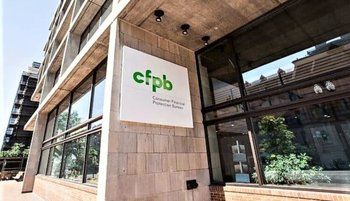Accelerating your mortgage payments in a HELOC-based "mortgage accelerator" program may save you lots of money, but strategies differ widely. Automating the process can be costly, while creating your own program of stepped-up payments can pay off handsomely -- and save you money.
Mortgage checking accounts and how they work
Financial products called mortgage checking accounts automate the acceleration of mortgage payments. They are offered by private companies and can be complex. These mortgage checking accounts speed up mortgage payments and lower your debt load.
How do they work? Payments are made via a checking account that leans on a home equity line of credit (HELOC) with a variable interest rate. Homeowners deposit their paychecks into that account and then draw on these funds each month for mortgage payments. Essentially, you're borrowing and repaying, borrowing and repaying.
But there are some big downsides to this method.
One well-publicized automated mortgage acceleration program carries several fees -- annual fees, origination fees, processing fees and other expenses -- that quickly add up.
"These are complicated programs," says Keith Gumbinger, Vice President at HSH.com. "Your mortgage is turned into a line of credit. Long-term savings are difficult to gauge. Rates aren't fixed."
There are stringent requirements, too. You'll need lots of equity in your home for automated programs, excellent credit and positive cash flow. "You're talking about a borrower with solid income prospects," says Gumbinger. "If your budget is close to the edge, you may not be comfortable paying your mortgage this way."
Do-it-yourself mortgage acceleration
Gumbinger and other experts add that there are better -- less costly -- solutions for speeding up mortgage payments. You can essentially implement these mortgage acceleration programs yourself, Gumbinger says.
Here are two ways to do mortgage acceleration yourself:
Method 1: Step up your monthly payments. Simply add $50 to each mortgage payment and apply it to your outstanding balance, or make biweekly payments instead of once a month. "Also, you can round off monthly payments upward," says Gumbinger, "or send in one extra monthly payment per year." Sending extra payments are a tried-and-true way of shaving years off your mortgage payments without adding complexity.
Method 2: Get your own home equity line of credit and accelerate payments. Jordan Goodman, co-author of "Master Your Debt," says that you can save tens of thousands of dollars by accelerating your own mortgage payments.
"People get so mesmerized by payoff dates of [automated] mortgage accelerators that they don't look at fees," he says. "You can do the same without paying the fees."
In traditional home mortgages, "your money is tied up in your house," says Goodman. "It's a one-way mouse trap." The reason, he explains, is that conventional 30-year mortgages have front-loaded interest payments. So it can take over 19 years before you're paying more principal than interest. The bank holds the magic key to payment schedules.
Mortgage acceleration reverses the equation. "Your house becomes your bank," he says. "Every day that goes by, you're making progress on your principal."
Goodman gives this example: a couple in Indiana had 12 years left on a 15-year mortgage with a 5.25 percent fixed interest rate. Their original mortgage was $225,000. After three years of making payments, they owed $192,934. Their take-home monthly income was $7,500, and their monthly expenses were $5,250, including $1,809 for the mortgage payment.
According to Goodman's calculations, the couple can be mortgage free in four years and 10 months, saving over $45,000 in interest costs, by using a HELOC.
"If you do it right, it's fantastic," says Goodman. "Getting the right HELOC is key. You don't want your line of credit frozen." He adds that some banks will link a HELOC to your checking account.
Still, trading a standard 30-year fixed mortgage for a line of credit to pay off your mortgage can be scary. Gumbinger advises consumers to ask themselves two questions: Do you need flexibility? Are you prepared for rising interest rates?
The process can be misunderstood, adds Bill Westrom, co-author of "Master Your Debt" and CEO of IFS Development Group in Portland, Oregon. "People are scared of variable-rate loans," he says. "A fixed loan is safe and secure."
Westrom also adds that operating a mortgage checking account yourself can be tricky. "What happens if the line of credit freezes?" he asks. Goodman also recommends getting an analysis by a qualified expert before pursuing this particular DIY strategy.
"You can save tens of thousands of dollars in interest and avoid fees, though," says Westrom, whose site truthinequity.com offers free assessments. "The tools are available. And you need to learn how to use them more efficiently."



